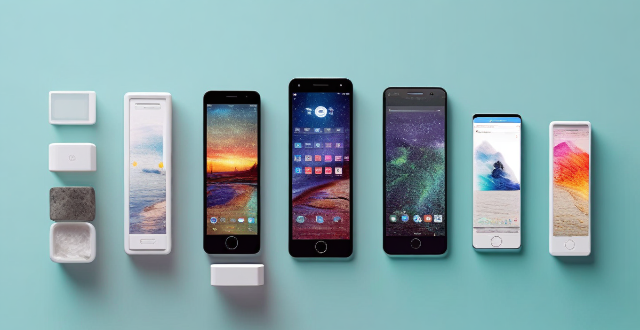Ergonomics plays a crucial role in determining the shape and size of smartphones, ensuring they are comfortable, accessible, and efficient for human use. It helps designers create devices that are easy to hold, operate, and view while minimizing strain and discomfort on the user's hands, wrists, and eyes. Ergonomic considerations in smartphone design include factors such as shape, size, weight, button placement, display quality, material choices, feedback mechanisms, and adaptability. By considering these factors, designers can create devices that cater to the needs and preferences of diverse users.

Ergonomics in Smartphone Design
Ergonomics plays a crucial role in determining the shape and size of smartphones. It is the science of designing products that are comfortable, safe, and efficient for human use. In the case of smartphones, ergonomics helps designers create devices that are easy to hold, operate, and view while minimizing strain and discomfort on the user's hands, wrists, and eyes.
Importance of Ergonomics in Smartphone Design
1. Comfortability: A smartphone should be comfortable to hold and use for extended periods without causing fatigue or discomfort. Ergonomics helps designers create devices with shapes and sizes that fit naturally in the user's hand, reducing the risk of hand fatigue or cramping.
2. Accessibility: Ergonomics ensures that all features of a smartphone are easily accessible to users, regardless of their hand size or finger length. This includes the placement of buttons, ports, and other controls on the device.
3. Usability: The overall design of a smartphone should be intuitive and easy to use. Ergonomics helps designers create interfaces that are easy to navigate and understand, even for first-time users.
4. Visual Comfort: The size and resolution of a smartphone's display should be chosen based on ergonomic principles to ensure that users can read text and view images comfortably without straining their eyes.
5. Safety: Proper ergonomic design can help prevent accidents caused by dropped phones or incorrect usage. For example, textured surfaces can provide better grip, reducing the risk of dropping the device.
Ergonomic Considerations in Smartphone Design
1. Shape: The shape of a smartphone should allow it to fit comfortably in the user's hand without requiring excessive grip strength. Curved edges and rounded corners can help distribute pressure more evenly across the palm and fingers.
2. Size: The size of a smartphone should be chosen based on the average hand size of its intended users. A larger screen may provide a better viewing experience but can also make the device more difficult to handle.
3. Weight: A heavier smartphone may feel more substantial, but it can also cause fatigue when held for extended periods. Ergonomics helps designers find the right balance between durability and comfort.
4. Button Placement: The placement of buttons and controls on a smartphone should be easy to reach and operate without requiring awkward hand movements or stretching.
5. Display Quality: High-quality displays with appropriate resolution and brightness levels can reduce eye strain and improve visual comfort during prolonged use.
6. Material Choices: The materials used in a smartphone's construction can impact its ergonomic properties. For example, textured surfaces can provide better grip, while soft-touch materials can reduce pressure points on the skin.
7. Feedback Mechanisms: Tactile feedback from physical buttons or haptic feedback from touchscreens can enhance usability by providing clear confirmation of user input.
8. Adaptability: Ergonomic designs should consider the diversity of users, including those with disabilities or limited mobility. Features such as voice control, adjustable font sizes, and color contrast settings can make smartphones more accessible to a wider range of users.
In conclusion, ergonomics plays a vital role in shaping the design of smartphones by ensuring that they are comfortable, accessible, and efficient for human use. By considering factors such as shape, size, weight, button placement, display quality, material choices, feedback mechanisms, and adaptability, designers can create devices that cater to the needs and preferences of diverse users.